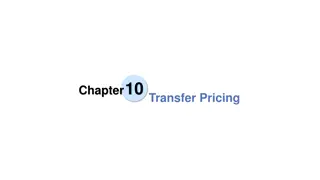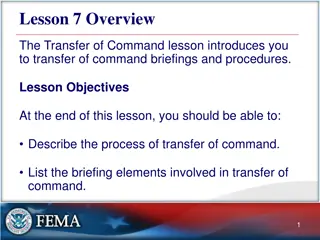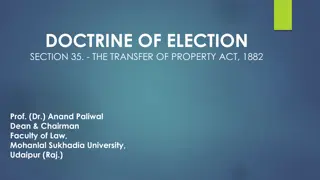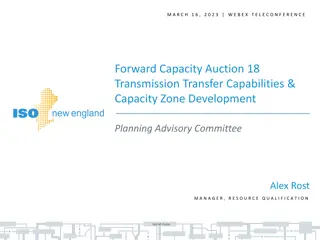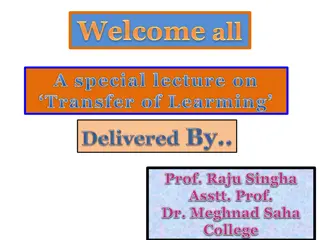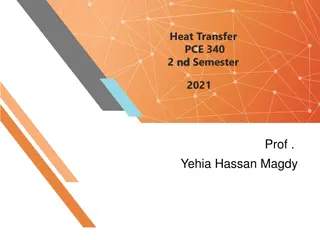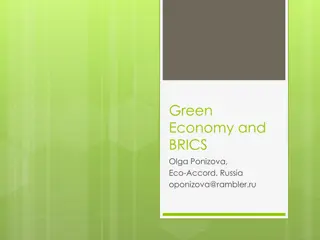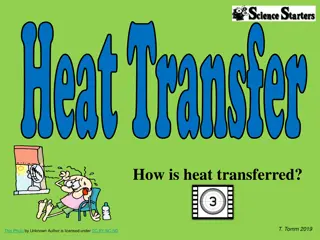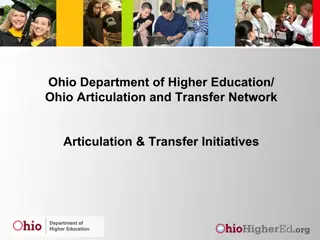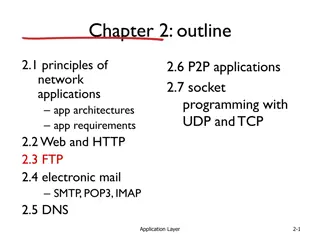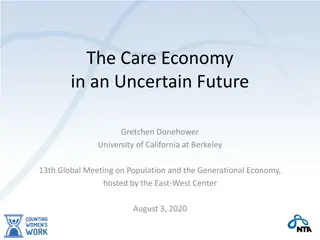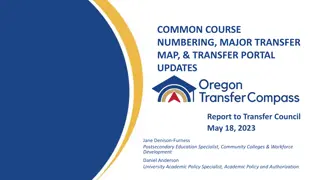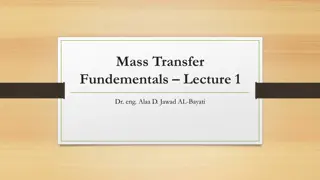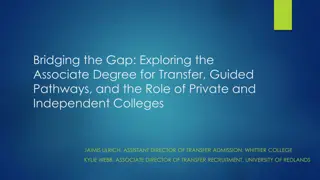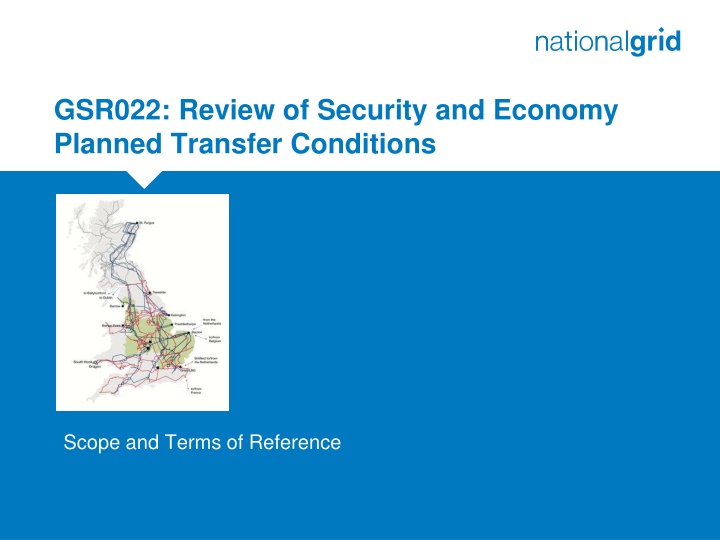
Review of Security and Economy Transfer Conditions
This review addresses planned transfer conditions regarding security and economy, covering aspects such as generation technology, contractual arrangements, and transmission capacity. Issues related to assumptions, operational regimes, and collaboration with Scottish Transmission Owners are discussed within the context of the workgroup's findings. The report emphasizes the importance of keeping assumptions up to date and fostering collaboration among stakeholders for effective policy implementation.
Download Presentation

Please find below an Image/Link to download the presentation.
The content on the website is provided AS IS for your information and personal use only. It may not be sold, licensed, or shared on other websites without obtaining consent from the author. If you encounter any issues during the download, it is possible that the publisher has removed the file from their server.
You are allowed to download the files provided on this website for personal or commercial use, subject to the condition that they are used lawfully. All files are the property of their respective owners.
The content on the website is provided AS IS for your information and personal use only. It may not be sold, licensed, or shared on other websites without obtaining consent from the author.
E N D
Presentation Transcript
GSR022: Review of Security and Economy Planned Transfer Conditions Scope and Terms of Reference 1
Contents 1. Background 2. Scope of the Workgroup 3. Review of Security Planned Transfer Conditions 4. Review of Security Economy Transfer Conditions 5. Timescales 6. Discussion 2
Background Size and connection level Availability of generation Generation technology Contractual arrangement Section 2 Transmission capacity required Section 4 (Economy) Section 4 (Security) Section 4 (year round conditions) 3
Background Size and connection level Availability of generation Generation technology Contractual arrangement 5 Section 2 2 Transmission capacity required Section 4 (Economy) 1 3 4 Section 4 (Security) 1 3 4 Section 4 (year round conditions) 9 5 2 4
Background 1. Under the defined background assumptions, there is not enough/ a lot more generation which leads to unreasonable assumptions to be made. Size and connection level Availability of generation Generation technology Contractual arrangement 2. Not familiar with the operational regimes of some new generation technologies. 5 Section 2 2 Transmission capacity required Section 4 (Economy) 3. The assumptions made on contributions from different types of generation maybe out of date. Some are not modelled at all. 1 3 4 Section 4 (Security) 1 3 4 Section 4 (year round conditions) 9 5 2 4. The inclusion of Small and Medium Embedded Power Stations in the Security and Economy background is subject to interpretation. 5. Lack of BM participants make certain boundaries inoperable. 5
Background Three groups with almost the same workgroup members Issues 1 and 3 GSR022: Review of Security and Economy Planned Transfer Conditions Size and connection level Availability of generation Generation technology Contractual arrangement Issues 4 and 5 GSR016 Small and Medium Embedded Generation Assumptions 5 Section 2 2 Transmission capacity required Section 4 (Economy) 1 3 4 Issues 2 Section 4 (Security) 1 3 4 The SO/TOs need to keep their assumptions up to date. Section 4 (year round conditions) 9 5 2 Provisionally internal workgroup within NGET. Issues could be addressed by GSR022 Workgroup Seeking input from /collaboration with Scottish TOs via the JPC as required. Issues could be addressed by GSR016 Workgroup Updates to the JPC and NETS SQSS Review Panel as necessary. Issues could be addressed by a policy that is: 1) informed by the work done by the GSR022 Workgroup; and 2) agreed with the TOs via the JPC 6
Scope Workgroup to address issues related to security background economy background arising from Size and connection level Availability of generation Generation technology Contractual arrangement Generation Technology Availability of Generation 5 Section 2 2 Transmission capacity required Section 4 (Economy) 3 4 These issues are 1. Under the defined background assumptions, there is not enough/ a lot more generation which leads to unreasonable assumptions to be made. Section 4 (Security) 1 3 4 Section 4 (year round conditions) 9 5 2 Issues could be addressed by GSR022 Workgroup 3. The assumptions made on contributions from different types of generation maybe out of date. Some are not modelled at all.. Issues could be addressed by GSR016 Workgroup Issues could be addressed by a policy that is: 1) informed by the work done by the GSR022 Workgroup; and 2) agreed with the TOs via the JPC 7
Scope of the Workgroup Two separate work streams Security Planned Transfer Decision driven by availability of generation, their operational regimes, and the risk of not being able to supply demand due to network constraints. Size and connection level Availability of generation Generation technology Contractual arrangement Some analysis is required Economy Planned Transfer 5 Section 2 2 Transmission capacity required Section 4 (Economy) 1 3 4 Decision mainly economic Required understanding of the operating regimes for different types of plants Section 4 (Security) 1 3 4 Comprehensive statistical analysis and Cost Benefit Analysis studies are necessary Section 4 (year round conditions) 9 5 2 The introduction of an additional background should not be ruled out at this stage It is proposed that the Workgroup reports on each work stream separately. 8
GSR022- WS1: Security Planned Transfer Conditions What is it that we are trying to achieve, and what are the expectations of our stakeholders? Providing transmission capacity to ensure that the peak demand can be supplied by generation that might be available in a different part of the network vs. Providing transmission capacity to ensure that the peak demand can be supplied by generation that we are 100% certain is available Potentially a criteria that applies differently for different areas could be used (large vs small area or importing vs exporting area) 9
GSR022- WS1: Security Planned Transfer Conditions Review of the Straight Scaling Technique (Could be an interim position) Review of assumptions on Interconnectors Review of assumptions on other generation types A view on Demand Side Management 10
GSR022- WS2: Economy Planned Transfer Conditions Has there been any change to assumptions that were used to specify the current scaling factors? Is a need to change existing scaling factors? To what extent did the CPA conducted by the GSR009 workgroup consider different boundaries. Is there any discrepancy between the methodology used by GSR009 workgroup and that used by different TOs to support the need case for their investment? What is the most suitable way to model new technologies (solar, storage, etc.)? Is there any discrepancy between the methodology used by GSR009 workgroup and NOA? What is the level to which all types of generation should be dispatched at? Do we need a new set of Planned Transfer Conditions or is it sufficient to modify the Economy Planned Transfer Conditions? How to address scenarios with generation being in excess of demand? What methodology should we use for CPA? What scenarios should be covered by the CPA? What are the new scaling factors? What data do we have regarding all different types of generation What are the advantages/disadvantages of a locational criteria (large vs small area or importing vs exporting area) 11
Timescales WS-1: 12 Months WS-1: 24Months First meeting: Early to mid December 12
Discussion 13



